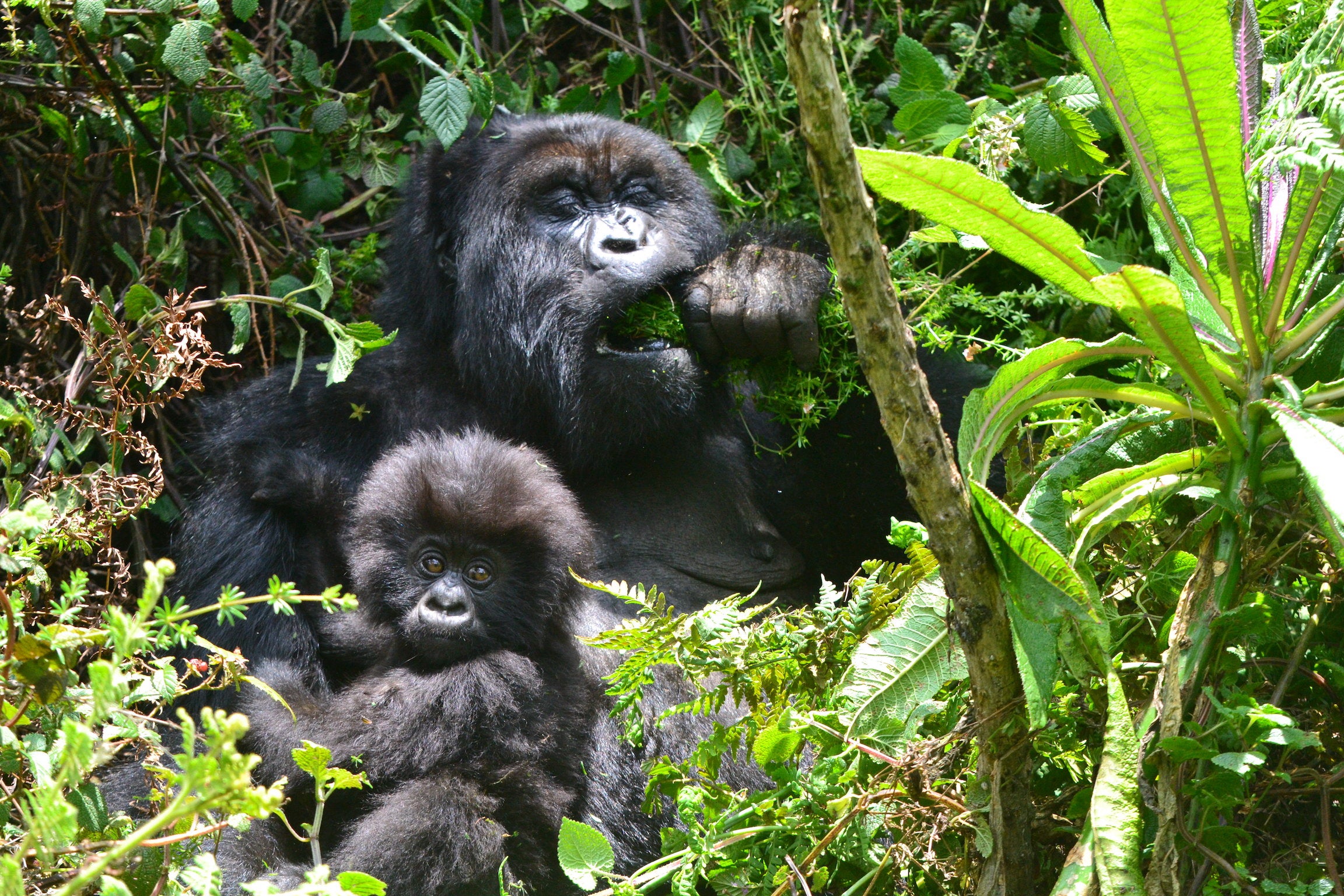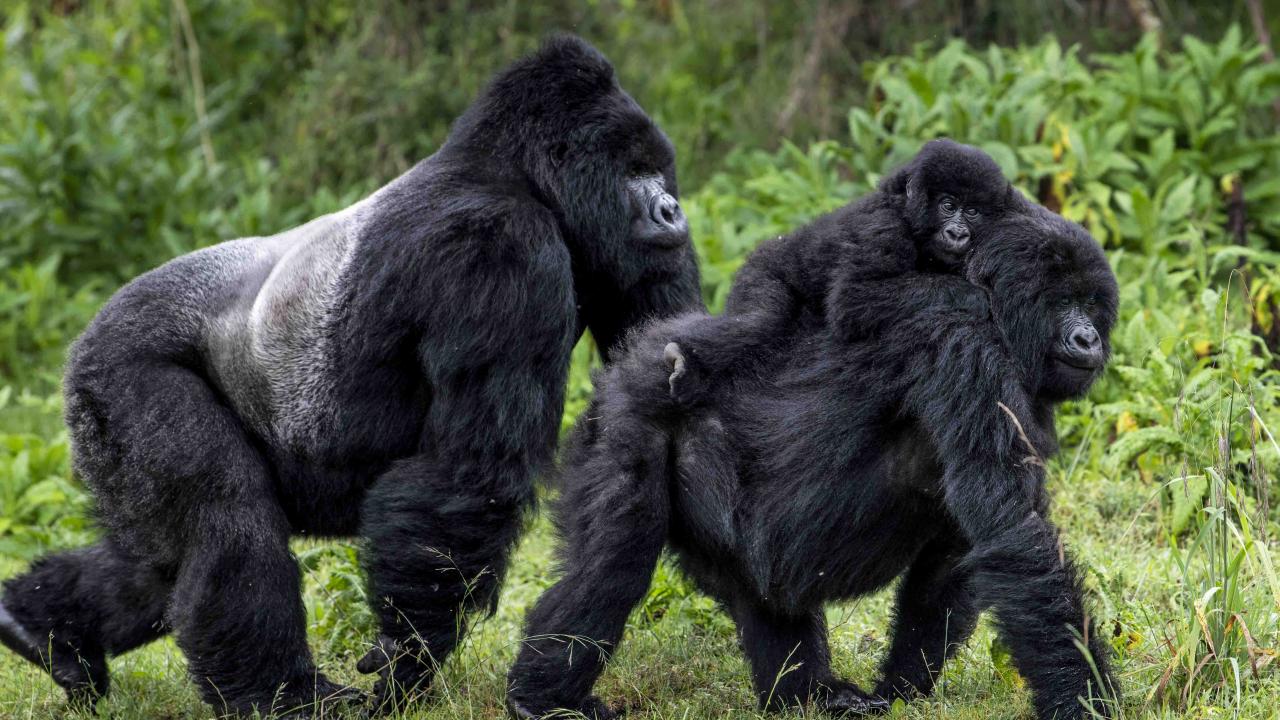If infected with the Ebola virus, less than 20% of endangered mountain gorillas living in Africa’s Virunga Massif region would be expected to survive more than 100 days past the first confirmed case. That is according to a study that used computer modeling to simulate an Ebola virus outbreak and project its impacts among mountain gorillas living in Rwanda, Uganda and Democratic Republic of Congo. The study, published in Scientific Reports, found that such an outbreak could decimate the population, which numbers just over 1,000 individuals.
The study was conducted by researchers affiliated with the Smithsonian Institution, as well as scientists from Gorilla Doctors, which is based at the University of California, Davis; the Species Conservation Toolkit Initiative; Virginia Tech; and other institutions.
While none of the vaccination strategies examined would prevent widespread infection, the model did project that survival rates of 50% or greater could be achieved by vaccinating at least half of the habituated gorillas within three weeks of confirming the first infected gorilla.
Highly lethal
While there have been no confirmed cases of Ebola virus in wild great apes since 2005, Ebola is present and circulating in East-Central Africa, and there is cause for concern for cross-species transmission in regions of intense human-wildlife overlap.
“We have been very lucky that, to date, Ebola virus has not impacted mountain gorillas,” said the senior author, Kirsten Gilardi, Gorilla Doctors executive director and a professor with the Karen C. Drayer Wildlife Health Center at UC Davis’ School of Veterinary Medicine. “But the findings provide further support for vigilant pathogen surveillance and contingency planning to mitigate the risk of Ebola virus entering the mountain gorilla population. That we were able to produce these findings with data provided from Rwandan, Ugandan, and Congolese wildlife authorities demonstrates their commitment to protecting these magnificent great apes.”
Mountain gorillas are social animals living in tight-knit groups that sometimes come into contact with other groups. Ebola virus is highly lethal to great apes, with an estimated mortality rate of up to 98%.
“The Virunga Massif population of mountain gorillas is isolated in national parks — forest ‘islands’ surrounded by some of the highest human population densities in Africa — and we know that gorillas are susceptible to human pathogens,” said lead author Dawn Zimmerman, research associate with the Smithsonian’s National Museum of Natural History. “The risk of spillover from humans to gorillas is a significant threat. This study makes a strong case for either preemptively vaccinating 50% of the habituated mountain gorillas or being ready to vaccinate at the first detection of Ebola in the population.
“While it won’t prevent widespread infection, it could increase the survival rate across the population to as much as 50%.”

Helping endangered mountain gorillas
Learn more about how UC Davis and the Gorilla Doctors are helping this unique species.
Predicting the impacts of disease
The study used Outbreak software, an open-source tool that allows wildlife conservationists to predict impacts of disease in populations or ecosystems. The scientists examined the potential population impact if a single individual gorilla were to be infected with Ebola virus.
“While disease modeling of wildlife has unique challenges compared to human or livestock populations because of limited data, these kinds of exercises can contribute to our understanding of disease risk and inform population management strategies and interventions,” said senior author Robert Lacy with the Species Conservation Toolkit Initiative. “This is especially useful when managing an endangered species with a small population size who are at risk of diseases with high mortality rates.”
This highly collaborative exercise points to the critical importance of preparedness and the continued monitoring and surveillance of wildlife populations for the detection of infectious disease. As human population growth and changing land use patterns continue to increase the pressures on and threats to wildlife, predictive models such as this one can help strengthen existing strategies and cooperation to protect wildlife from devastating disease outbreaks.
Additional co-authoring institutions: Merck & Co., Institut Congolais Pour La Conservation de Nature and the International Union for Conservation of Nature. The study was partially funded by the Arcus Foundation.
Amy Bond is the chief communications officer for Gorilla Doctors.
Media Resources
Media Contacts:
- Kat Kerlin, UC Davis News and Media Relations, kekerlin@ucdavis.edu, 530-750-9195
- Amy Bond, Gorilla Doctors, abond@gorilladoctors.org
